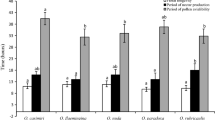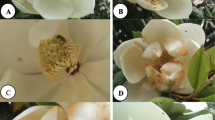Abstract.
The reproductive ecology of Euphrasia willkommii (Scrophulariaceae), an endemic species from the Mediterranean alpine environments of the SE Spain, has been experimentally studied during two reproductive seasons. The flowers of this plant species were visited by very few insects belonging only to two generalist taxa, thrips and ants. Nevertheless, reproduction is not pollen limited in E. willkommii. Hand-pollinations demonstrated that this plant species is capable of selfing, reproductive success being similar in autogamous and allogamous crosses. Moreover, pollinator-exclusion experiments also showed that, under natural conditions, this plant relies predominantly on selfing, seed production being similar in presence or absence of pollinators. Selfing in E. willkommii is presumably an ecological mechanism to ensure successful reproduction in a harsh environment where pollinator availability is extremely low.
Similar content being viewed by others
Author information
Authors and Affiliations
Additional information
Received May 2, 2001 Accepted December 6, 2001
Rights and permissions
About this article
Cite this article
Gómez, J. Self-pollination in Euphrasia willkommii Freyn (Scrophulariaceae), an endemic species from the alpine of the Sierra Nevada (Spain). Plant Syst. Evol. 232, 63–71 (2002). https://doi.org/10.1007/s006060200027
Issue Date:
DOI: https://doi.org/10.1007/s006060200027




